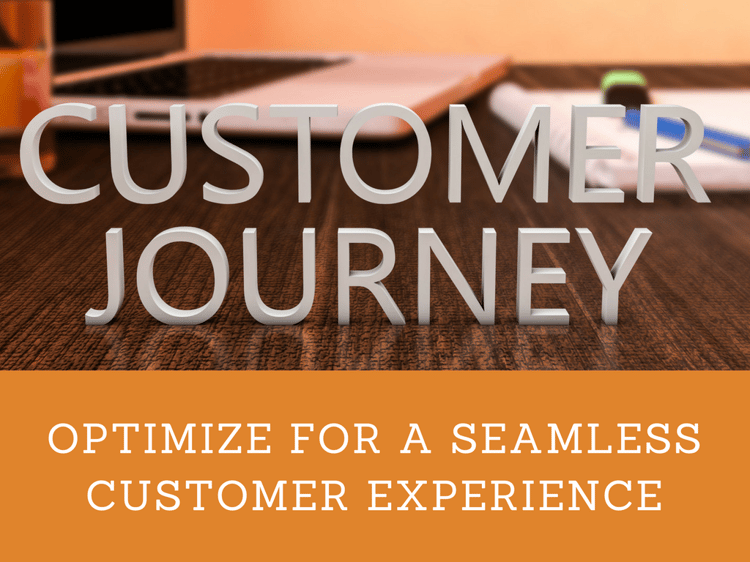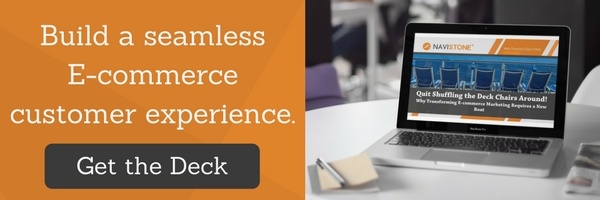Customer data is at the heart of a data-driven, consumer-focused marketing strategy, and understanding the story behind the data begins by knowing who your customers...

Marketers find themselves at an interesting crossroads. It’s never been easier for advertisers to create and distribute various marketing messages in many channels and in many different mediums, but at the same time, it’s harder than ever to truly reach customers. There’s always a viral marketing piece around the corner, waiting to take the attention of your customers; additionally, the social pressure — from social media to corporate social responsibility — makes it incredibly easy for consumers to simply pursue only those products and services that are fashionable in the moment.
To create a truly seamless customer experience, a company must be in many places at once. From email to social media to SEO, you should be everywhere, and you should be receptive to the messages you receive from consumers every step of the way. It’s something easier said than done, but it’s a must for any business that wants to keep its consumers loyal over the long term.
First Create a Single Customer View
Companies are beginning to realize it’s much better for the marketing department to pool its resources into a cohesive consumer-focused strategy to reach the customer, wherever he or she may be — by using online and offline data to create a single customer view. This approach negates the duplication of both internal resources and external communications, and means a true dedication to fully understanding the customer’s path to purchase. You must immerse yourself in every touchpoint, identifying ways in which individuals interact with your advertising and optimizing the experience at each interaction. Additionally, you’ll have to understand how each of these factors work together, and you’ll need to know which buttons to push along the way.
Learn Why E-commerce marketers must rethink the consumer experience and their role in delivering effective marketing at every touchpoint.
Website
Your website is the foundation for a seamless customer experience. No matter where individual consumers begin interacting with your marketing efforts, odds are good they’re going to come across your website at some point. A web search will link to your website, a QR code will push viewers to your site and social media posts should lead directly to your online content. Your website must be good. After all, you only get one chance to make a first impression.
Your company’s website must be engaging, informative, mobile-friendly and simple to navigate. The site should make it easy for visitors to sign up for your email list; links to your social media platforms should also be readily available. These tools will help you to further the conversation with your customer base. In the case of email lists, you’ll be able to directly link an email address to website traffic, helping you measure consumer activity in multiple channels.
While it would be great if people bought from your website on their first visit, odds are good that they’ll either do further research or check out your products in a store. In the absence of a purchase, your website should be capable of answering the questions your audience may have, while keeping them interested in learning more about your company.
Of all the digital means of communication available to marketers, email is the most effective in terms of leading directly to sales. For every $1 spent on email marketing, businesses receive $38 in return, according to Campaign Monitor. Clearly, the efficient use of email marketing is critical for any company that wants to increase revenue.
But there’s more to email marketing than simply sending out email blasts every week. Email marketing only works when the stage has been properly set for the right email to come at the right time. For this system to work, your email marketing systems have to aggregate information from all of your marketing platforms. In other words, email should be about more than click-throughs and desktop website activity. The best email marketing also incorporates website browsing activity, mobile activity, social media interaction and even in-store communications. In the absence of these factors, email marketing can quickly veer towards spam-like emails that are easily ignored.
Organic Search and Paid Search
Search engine optimization (SEO) gets a bad rap these days, largely because of the legion of companies that have resorted to keyword stuffing and various other black-hat SEO tricks. The reality, though, is that SEO can be quite effective when used correctly.
Although consumers might know what they need, they don’t always know where to get it. And while they may jump right to a major site like Amazon, they’re still very likely to use a search engine to get information about their impending purchase. According to Search Engine Journal, more than 90 percent of online experiences are originated via search engines. This means that there’s still an opportunity for you to get your name out there so people will see your company’s name when they search for something within your area of expertise.
Search engines can be extremely effective pushing new customers towards the other arms of your marketing strategy. A search engine listing - whether organic or paid - leads searchers to your website, where they can find your social media accounts or sign up for your email list. These are individuals with a demonstrated need for the products you offer, and they’re declaring their interest by interacting with multiple marketing channels. These are prospects who should be taken very seriously.
Another great application for SEO can be found in local searches. Web users often search for a given keyword with a qualifier of “near me.” These individuals might not go straight to your website, but they might head directly for your brick-and-mortar location, giving you a great opportunity to attract a long-term customer.
Social Media
Marketers have placed an increased emphasis on social media in recent years, and it’s been a wise investment of their time and resources. It’s an increasingly social world, and the only thing better than wowing a customer is doing so in an environment in which those individuals are likely to rave about their experience to other people. Social media gives companies and customers the opportunity to reach large audiences, and while the knife does cut both ways, social media platforms often make high-functioning companies look very good to the outside world.
However, much like email marketing, social media marketing on its own only goes so far. Many businesses place a high priority on creating content with the potential to go viral on social media, but fail to understand the bigger picture. The main reason for using social media is not to maximize your number of likes - it’s to leverage social media and direct interested members of your audience to other platforms, where the customer-company relationship can be enriched and sales can be made. A social media account that doesn’t send a steady flow of consumers to your company’s website is an account that’s not performing an essential function.
The impact of social media isn’t limited solely to E-commerce. Social media can also play a major factor in brick-and-mortar sales through coupons and promo codes that can only be used in stores. Additionally, maintaining attractive storefronts will encourage people to post pictures to their personal social media accounts, helping to persuade other people to come down to your physical locations.
Digital Display/Programmatic Advertising
The customer’s path to purchase is rarely a linear one. Consumers typically talk to other people, conduct online research and read online reviews. This information gathering process may take these individuals to many sites across the Internet, and it’s understandable that you might want to remind these people about why they should choose your company over a competing brand.
Programmatic advertising is a great way to reach out to potential customers — in a non-creepy way — and simply bring up the item they were looking at and mention it’s still available on your website. The most common ways to do this are through emails (like those sent by Amazon) and via digital display ads that appear on the websites visited by your customers.
These approaches add to the customer experience by providing a timely nudge at a critical juncture in the customer’s path to purchase. Of course, this isn’t a medium to be used lightly; an overly aggressive series of ads will only serve to turn off interested consumers. By using the consumer data you’ve accumulated about their path to purchase, you’ll know when to reach out to a consumer who might be on the fence about a product in which they recently showed interest. The programmatic ad links directly to your website, which allows the consumer to immediately complete their purchase.
Direct Mail
If you were to compile a list of essential elements in creating the ultimate customer experience in 2017, direct mail probably wouldn’t be one of the first things you’d consider. And yet, direct mail remains vitally important to any marketing campaign.
As effective as email marketing can be, direct mail marketing generates a much higher response rate, and the efficiency of direct mail is only increasing as the world becomes more reliant on technology. Direct mail stands out above the digital clutter, giving you the chance to make a true pitch to a consumer without competing with dozens of emails or social media ads. It’s also a great way to combine multiple ways of pitching a customer; for example, a direct mail piece might contain a letter, a miniature catalog and a QR code that sends a viewer straight to your website.
Like all the other marketing platforms we’ve discussed, direct mail works best as part of a larger marketing system. The good news is that direct mail can use the same data you’ve already collected about your customer base. Direct mail can be used as a persuasive way to showcase new product offerings or reward long-term customers, and you can even use programmatic postcards to deliver individualize marketing to customers that have exhibited strong interest in an item.
Because direct mail works hand-in-hand with your other marketing mediums, you’ll only use direct mail to target consumers with a strong likelihood of responding positively to your materials. This helps to reduce costs while simultaneously increasing the effectiveness of all your marketing platforms.
Prepare for the Age of Experience
Creating a seamless customer experience is a major advantage in today’s consumer-focused climate. Equipping your company with the tools to meet the customer at their level will not only help you to make more money today, but it’ll facilitate the relationships and recommendations that will see your business surge in the months and years to come.

